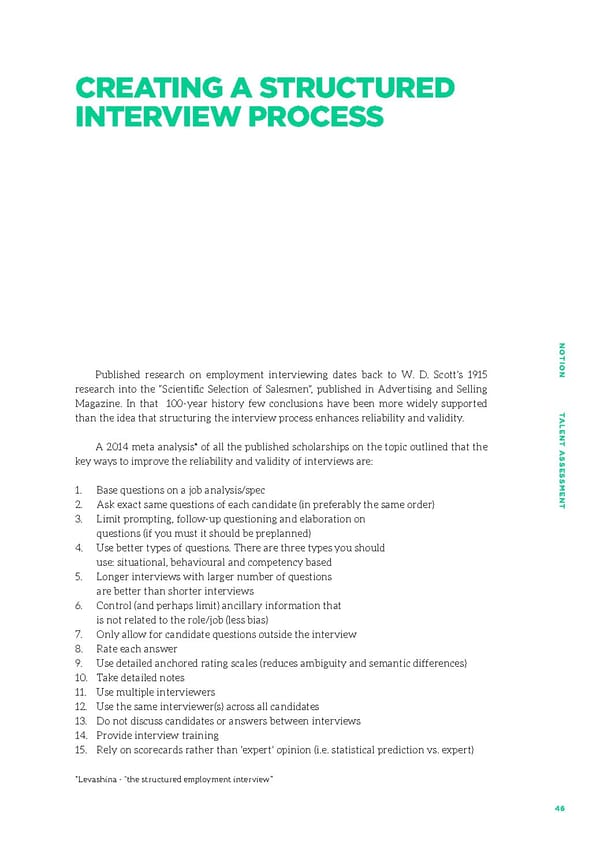CREATING A STRUCTURED INTERVIEW PROCESS NONO TION TTION T Published research on employment interviewing dates back to W. D. Scott’s 1915 research into the “Scientific Selection of Salesmen”, published in Advertising and Selling Magazine. In that 100-year history few conclusions have been more widely supported than the idea that structuring the interview process enhances reliability and validity. ALENT AALENT A A 2014 meta analysis* of all the published scholarships on the topic outlined that the SS key ways to improve the reliability and validity of interviews are: SESSES 1. Base questions on a job analysis/spec SMENTSMENT 2. Ask exact same questions of each candidate (in preferably the same order) 3. Limit prompting, follow-up questioning and elaboration on questions (if you must it should be preplanned) 4. Use better types of questions. There are three types you should use: situational, behavioural and competency based 5. Longer interviews with larger number of questions are better than shorter interviews 6. Control (and perhaps limit) ancillary information that is not related to the role/job (less bias) 7. Only allow for candidate questions outside the interview 8. Rate each answer 9. Use detailed anchored rating scales (reduces ambiguity and semantic differences) 10. Take detailed notes 11. Use multiple interviewers 12. Use the same interviewer(s) across all candidates 13. Do not discuss candidates or answers between interviews 14. Provide interview training 15. Rely on scorecards rather than ‘expert’ opinion (i.e. statistical prediction vs. expert) *Levashina - “the structured employment interview” 4646
 Talent Assessment for Growth Startups Page 42 Page 44
Talent Assessment for Growth Startups Page 42 Page 44